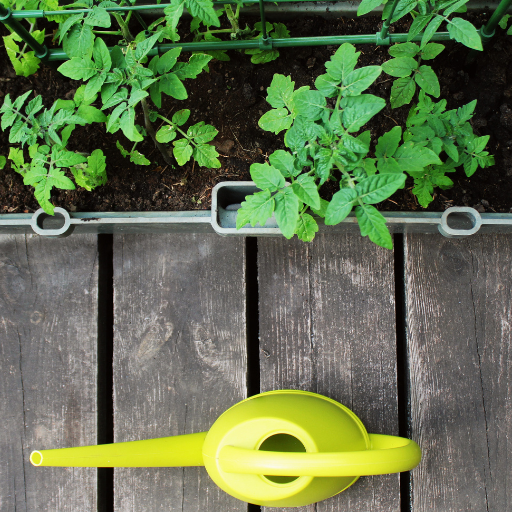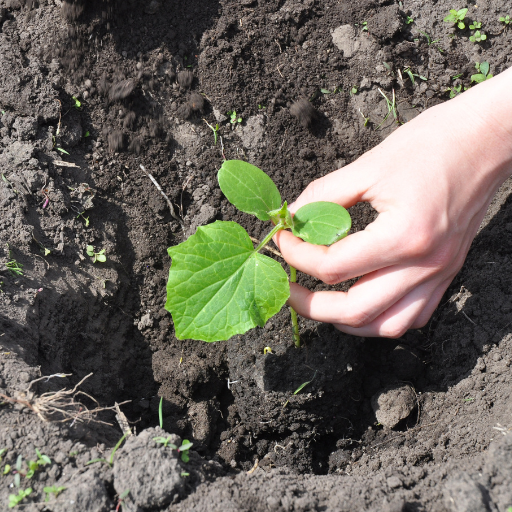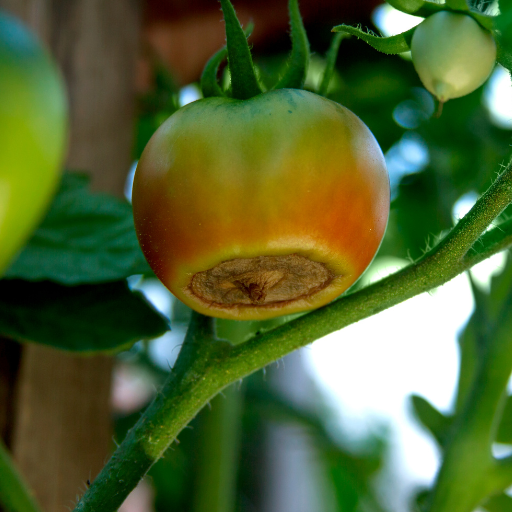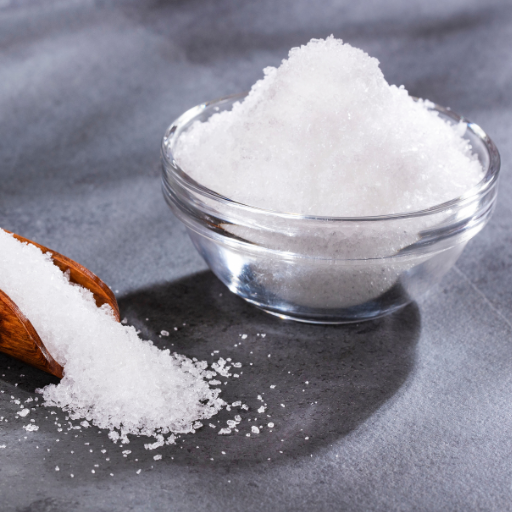In horticulture, Epsom salt, which is a mineral compound occurring in nature and made up of magnesium and sulfate, is known for its benefits. For plants to use Epsom salt, the main aim is to arrest the magnesium-wanting condition of the soil, which can hinder plant growth and general health. It will introduce Epsom salt into gardening practice that improves nutrient uptake, supports chlorophyll production and helps plants to produce flowers and fruit. The article will explain scientifically how Epsom salt works, the best way to use it, and which plants it benefits most, thus giving an all-round guide for gardeners or horticulturists who want to realize these advantages.
How Does Epsom Salt Benefit Plants?
Epsom salt is known to benefit plants primarily because it contains magnesium, an essential element in photosynthesis as the central atom in chlorophyll molecules. This improves the ability of plants to trap light energy and hence their growth rate and vitality. Moreover, this metal aids in the up take of important nutrients like nitrogen and phosphorous making sure that a plant’s metabolic activities are at their maximum level. On the other hand, sulfate contained in Epsom salt strengthens cell walls while at the same time facilitating enzyme activity in plants thus improving its disease resistance and structural integrity. As such both elements work together harmoniously for maximum nutrient uptake, promoting greater chlorophyll production and more blossoming through stronger healthier plants.
What Nutrients Does Epsom Salt Provide?
Epsom salt mainly supplies two fundamental nutrients magnesium and sulphate. Magnesium (Mg) is one of the components found in chlorophyll that makes photosynthesis possible. It controls more than 300 enzymes or catalysts involved in various biochemical processes within a plant especially those concerned with nutrient absorption and metabolism. The technical parameter for magnesium content in Epsom salt is approximately 9.8% by weight.
Sulfate (SO₄²⁻) is also important since it helps synthesize amino acids, proteins, and enzymes. Protein synthesis is enhanced while cell walls remain structurally strong but flexible enough to expand during periods of rapid growth . In addition they help detoxify soils by combining with soil toxins to make them unavailable for plant use. By percentage weight, sulphate concentration content found in Epsom salt amounts to about 12.9%.
Both minerals work symbiotically to promote overall plant health, robust growth, as well as abiotic stress resistance.
How Does Magnesium Help Plants?
Magnesium plays a vital role that revolves around its place among core components of chlorophyll molecule. This means that it is essential for photosynthesis since chlorophyll contains the magnesium atom that captures light energy. This process determines how much glucose and other carbohydrates the plant can produce.
Technically, magnesium is important because it is a cofactor in more than 300 enzymatic reactions necessary for plant metabolism. These reactions are responsible for different biological pathways, including the synthesis of nucleic acids, carbohydrates, and lipids. Magnesium facilitates nitrogen and phosphorous uptake, thus optimizing their metabolism within plants.
The technical parameters indicate that the optimal concentrations of Epsom salts should be approximately 9.8% by weight to ensure enough supply for crops’ physiological needs. Magnesium levels contribute to plant structural development, increased yield, and defense against some stressors, such as physiological disorders and pathogen attacks.
Can Epsom Salt Improve Flower Bloom?
Epsom salt can indeed enhance flower bloom through provision of essential nutrients aimed at ensuring healthy plant growth. The magnesium contained in Epsom salts is readily absorbed by plants, enhancing chlorophyll production and leading to deep,hued flowers.Sulfate also fortifies cell walls which consequently improve nutrient absorption hence more exuberant flowering.Accordingly,frequent applications of Epsom salt, either via incorporation into the soil or foliar spraying, can significantly increase the roses,pansies,tulips, tomatoes, etc. blossoms’ number and size.Regular use helps correct magnesium deficiencies which may affect floral production adversely.
How to Use Epsom Salt in the Garden

To use Epsom salt in the garden, begin by understanding various ways in which it is applied for different plant needs. To water plants once a month, for example, dissolve a table spoon of Epsom salt in one gallon of water. It works well with houseplants, vegetables and flowers. For soil amending purposes, scatter around the base of shrubs or trees one tablespoonful of Epsom salt per foot of the plant height and water thoroughly to dissolve it so that it is absorbed into the root system. A foliar spray can benefit magnesium-deficient tomatoes and peppers; you need to dissolve one tablespoonful of Epsom salt in a gallon of water and then spray this solution on the foliage every two weeks. Pre-planting boost: Mix 1 or 2 tablespoons of Epsom salts into hole while planting seeds or transplanting seedlings.
How Much Epsom Salt Per Gallon of Water Should I Use?
The recommended amount of epsom salt per gallon depends largely on what type of plant you are growing and its particular needs .For most general applications including indoor houseplants outdoor vegetables and flowers ,the standard guideline is one tablespoon dissolved in 1-gallon water from Magnesium-sulfate crystals .On the other hand ,for specific cases like having to add more Mg (magnesium) to soil with magnesium hydroxide given during tomato disease control ,this ratio is still valid . This concentration guarantees desired nutrient uptake without fear over-fertilizing since it remains safe for regular application.
What is the Best Way to Mix Epsom Salt for Plants?
To effectively mix Epsom salt for plants, start by ensuring that you use room-temperature water, as this helps dissolve all parts completely. Most plants would be fine with just one tbsp. per gallons, but make sure that you stir until none remains undissolved inside your mixture.Choose a clean container, as any chemical container may harm the plants.
The same ratio applies to mixing a foliar spray, for instance—1 table spoon Epsom salts dissolved in a gallon of water; however, the solution should be applied as a fine mist through sprayers. For soil amendment in larger plantations like trees or shrubs, just sprinkle Epson salt directly around the base of your plant, then water heavily on it to make sure that it dissolves and reaches the root system.
When you mix Epsom salt for pre-planting soil amendment,one or two spoons into the hole will be enough. Simply work it into the soil. This ensures magnesium and sulfate are available at the roots, fostering healthy plant growth from the beginning.
Is Epsom Salt a Spray?
Yes, you can use Epsom salt as foliar spray for plants to get their magnesium and sulphate needs. Ratios of one tablespoon of Epsom salt per gallon of water are suggested by the reliable sources. This mixture is sprayed on the leaf surfaces using fine mist sprayers so that it can flow over all parts uniformly. To prevent sunlight burn, it is advisable to spray early in the morning or late in the evening. The fine mist provides for quick absorption through leaves that could be particularly useful when correcting magnesium deficiencies compared to soil applications. Never spray during very hot weather because there would be evaporation losses and possible harm to leaves.
When Should You Use Epsom Salt on Plants?

When using Epsom salt on plants, adhering to specific conditions and timings for optimal results is critical. Epsom salt offers the most assistance during the growing season, especially when there are yellow leaves or underdeveloped plants due to lack of magnesium. In the case of tomatoes and peppers, it is advisable to apply this product while flowering takes place and during fruiting so that they can grow better without any nutrient-related hindrances. It would be good if houseplants and garden flowers were given this chemical through their routine watering once a month such that there is stable magnesium in soil. Even seedlings as well as new transplants would also benefit from application of Epsom salt at their initial stage so as to boost their growth rates.
What Season is Best for Adding Epsom Salt to Garden Soil?
Adding Epsom salt to garden soil is most effective in spring and early summer. During these seasons, plants are in their active growth phases, and the demand for magnesium is high. When added every spring, these applications will assist in increasing germination process as well as root health while those made before summer starts help ensure robust vegetative growth leading into high yielding fruits thereafter. For instance, applying Epsom salts whenever signs of low levels of magnesium emerge may be helpful because nutrients are not stored within plant’s bodies but rather need replenishment from external sources.
How Often Should You Add Epsom Salt for Optimal Growth?
Epsom salt should be applied with the following frequencies based on different plant categories and their specific needs to achieve optimal plant growth. Tomatoes and peppers among other vegetables need three teaspoons of Epsom salts after every forty two days. Mix one tablespoon of Epsom salt with a gallon of water; then pour it around your plants’ roots when necessary. Both outdoor gardens and indoor horticulture can benefit from monthly episodes involving 2 tablespoons dissolved in a gallon of water, which are used together with normal watering schedules. For every six weeks in the summer season, three pounds of it should be spread on lawns covering an area of 1,250 sqft to sustain sufficient quantities of magnesium in the soil. These guidelines are consistent with what is done by professionals in horticulture; for example, many famous gardeners online advise to give Epsom salts to plants at regular intervals.
Specific Plants and Epsom Salt

Epsom salt applications are beneficial to various crops including tomatoes, bell peppers, and roses. In tomatoes, Epsom salts improve flowering and fruiting. One teaspoon of Epsom salt can be added, during planting, followed by two weeks of either side dressings or foliage sprays throughout the season. Pepper plants also respond well to Epsom salt whereby its application improves overall plant vigor and yield. A tablespoon per gallon of water solution can be sprayed on blossom time so as to prevent blossom end rot. Roses also do very well with Epsom salt that encourages heavy production of blooms, vigorous cane growth and deep green leaves. For this purpose, during the growing season every plant should be fed one-half cups of Epsom Salt once a month.
How Do Tomato Plants Benefit From Using Epsom Salt?
Using Epsom salt is good because it helps to avoid lack of magnesium in tomato plants which is necessary for photosynthesis and other processes in whole life cycle thus becoming one of the ways how to increase tomato yields. Most typically magnesium deficiency symptoms include yellowing leaves along with reduced amounts of fruits.
During initial root establishment, a single tablespoonful of Epsom salts per planting hole may be added while a spray made from one tablespoonful per gallon every fortnight could follow suit. Horticultural literature supports this program which makes certain that there is enough magnesium content in soil for successful nourishment of the plant’s needs.Testimonials from professionals present indicate that some horticulturalists suggest further top dressing with Epson salts since it stimulates bloom as well as fruit development especially at blossoming stage.A majority agrees upon these parameters and will ensure that the tomato plants achieve optimal growth and productivity under close watch.
Why Do Pepper Plants Benefit from Epsom Salt?
Pepper Plants also benefit from Epsom salt like tomatoes. The main advantage of this is supplying magnesium, a necessary element in chlorophyll synthesis that enhances photosynthesis. According to most reliable sources, magnesium deficiency in pepper plants usually results yellowing leaves especially between veins together with retarded growth and poor fruit set.
Therefore, the inclusion of Epson salts during different stages of pepper plant’s growth is recommended. Using one tablespoonful of Epson salts per planting hole while transplanting is quite effective since it ensures immediate availability of magnesium thus aiding root establishment. Then, there can be bi-weekly applications of a foliar spray prepared by dissolving one tablespoonful of Epson salts per gallon throughout the growing season so as to maintain enough magnesium levels in the soil required by these plants.Additionally, further bloom development and fruit production may be done through side dressing with Epson salt that should equal one teaspoon per foot high whenever flowering and fruiting periods occur.
What Types Of Houseplants Benefit From Epsom Salt?
There is a plenty that could make use of some Epson salt like roses ferns or even palms.
Use Epsom salt to produce more roses with brighter-colored blossoms. Mix one tablespoon of Epsom salt with one gallon of water and apply it to the leaves once per month as a foliar spray.
Ferns showing signs of magnesium deficiency, such as fronds turning yellow, also benefit from Epsom salt. In this case, dissolve two tablespoons of Epsom salt in a gallon of water and drench the ferns every 4-6 weeks.
Palms are commonly affected by insufficient magnesium deficiency, which leads to yellowing green fronds at the base. In such cases, two tablespoons of Epsom salt should be mixed with each gallon of water before being applied near the palm’s base once every two months. Sticking to these protocols is important since it helps maintain these house plants’ good health and attractive appearance.
Can Epsom Salt Help with Common Plant Problems?

Indeed, Epsom salt can help in resolving many common plant problems. There are scientific studies that show that it is good for fixing magnesium deficiency which causes yellowing leaves and stunted growth. To restore magnesium levels, which facilitate nutrient uptake and enhance plant health in general, dissolve Epsom salt in water and apply it directly to the soil. Furthermore, Epsom salt may act as a catalyst to germinate seeds and strengthen cell walls leading to robust seedlings. Blooming can be encouraged by the use of this mineral particularly in flowering plants. However excessive application needs to be avoided as it could result in accumulation of salt in the ground thus subjecting the plant roots on risk.
How to Use Epsom Salt to Prevent Blossom End Rot?
Calcium deficiency is primarily responsible for blossom end rot while Epsom salts play an indirect role towards its prevention. Nevertheless, when properly used Epsom salts provide magnesium which can balance overall nutrient status of soils hence facilitating proper calcium absorption into plants. In order to use Epsom salts as a remedy for this problem, dissolve one tablespoonful of the compound in a gallon of water then irrigate directly at base of plants every two weeks throughout growing season. You should also note that you need consistently moist soil but not soaked since irregular irrigation worsens calcium absorption. On the other hand although not a direct answer for calcium deficiency; this substance improves fertility and reduces blossom-end rot incidence due to better soil conditions regarding nutrients availability and suitability for their growth such as pH levels that hinders easy uptake into them specifically.
Can Epsom Salt Help with Yellowing Leaves?
Yellowish leaves, which are often the result of a lack or imbalance of nutrients, could possibly be treated by using Epsom salt. Magnesium is the most important constituent of Epsom salt and is required to synthesize chlorophyll in plants. Different sources such as the Colorado Extension and Royal Horticultural Society University acknowledge that magnesium deficiency usually results in yellowing between veins while veins remain green on older leafs known as interveinal chlorosis.
To treat this problem, one can make a solution of Epsom salts either as dep sprays or directly on soil. The advice is normally to use one tablespoonful of Epsom salt per gallon for leaf application; this is sprayed onto leaves that have been kept cool to avoid burning up their insides during hotter parts of the day. In general, for soil application, 1-2 tablespoons per gallon every four to six weeks throughout the growing season should suffice.
It would be necessary to test whether magnesium deficiency is responsible for this before applying because too much epsom salts may lead to soil imbalance and damage plant roots.
Are There Any Risks in Using Epsom Salt for Plants?

Using Epsom salt for plants can be risky if not used appropriately. An overdose leads to the buildup of magnesium and sulfur in the soil, thereby causing nutrient imbalances that disturb other essential nutrients like calcium and potassium from being absorbed. Similarly, enormous magnesium levels may result in saline soils that are detrimental to soil structure and plant roots. Reducing these risks require adherence to recommended amounts as well as intervals of applications and regular checks on nutrient levels by means of soil testing. Specialists from local agricultural extension services should be able to provide appropriate information thus preventing any adverse effects on plant health.
Can You Use Too Much Epsom Salt?
Overusing Epsom salt does more harm than good when it comes to plant health. Applying too much could lead to an oversupply of magnesium and sulphur in the ground thus ruining its nutritious balance. Imbalances such as this one can prevent the uptake of other vital elements like calcium and potassium which are necessary for proper growth of a plant. Besides, excess magnesia will compress the earth, making it dense, hence affecting the growth and operation of roots negatively. Thus, it is necessary to follow precisely recommended doses as well as conduct periodic examinations into soil so that one can maintain the right quantity of nutrients; this will ensure the safety both for plants themselves and the ground.
Do All Plants Benefit from Epsom Salt?
Epsom salt has some benefits, but not all plants will benefit equally from its use. Some vegetables, such as tomatoes, peppers, and roses, need more magnesium or sulphur than others, so applying Epsom salt properly may speed up their growing process. However, some crops have enough magnesium or sulphur content, so they do not need an extra nutrient supply.
According to scientific guidelines, different rates should apply to various types of plants depending on soil conditions, among other factors, when using Epson salts. For instance, tomatoes would require a tablespoonful of Epsom salt for each foot measured vertically, deep into the soil at planting, and as a side dressing every other fortnight. A cup of Epsom salts dissolved in a gallon of water and sprayed on rose leaves after six weeks will do.
These recommended dosages were arrived at through empirical studies and should be modified depending on particular plant requirements as well as current nutritional profile inside the soil that can be established by checking the soil whenever needed. Thus, it is vital to know the exact needs of the plants in order to minimize any unbalanced feeding and get a desirable growth trend.
Frequently Asked Questions (FAQs)
Q: What is Epsom salt and how can it benefit my garden plants?
A: Epsom salt, scientifically known as magnesium sulfate, is a mineral compound that many gardeners use as a fertilizer. It can help improve the overall health and growth of garden plants by providing essential nutrients like magnesium and sulfur.
Q: How does Epsom salt impact the growth of tomato and pepper plants?
A: Epsom salt for tomato and pepper plants can be particularly beneficial. It helps in blossom end rot in tomatoes, promotes better flowering, and enhances nutrient absorption, aiding in healthier and more productive plants.
Q: Can Epsom salt be used for potted plants, and if so, how?
A: Yes, Epsom salt can help potted plants as well. Dissolve 1-2 tablespoons of Epsom salt in a gallon of water and use this solution to water the plants. This helps the plants absorb essential nutrients effectively.
Q: Is it safe to use Epsom salt to each hole when planting vegetables?
A: Applying Epsom salt to each hole is safe and beneficial. Many gardeners recommend adding about a tablespoon of Epsom salt to each hole before planting to help establish strong root systems in vegetable garden plants.
Q: How do I know if my plants need Epsom salt?
A: Plants with magnesium deficiency often exhibit signs like turning yellow between the veins of the leaves. If your plants show such symptoms, Epsom salt can help address the deficiency and improve plant health.
Q: Are there any risks if plants don’t like Epsom salt?
A: While Epsom salt can be beneficial, not all plants require it. Overuse may harm your plants or disrupt soil nutrient balance. It’s important to follow recommended application rates and observe your plants’ response to ensure positive results.
Q: How effective is spraying Epsom salt solution on plants?
A: Spraying Epsom salt solution directly on the foliage can be effective for quick nutrient uptake. Mix 2 tablespoons of Epsom salt in a gallon of water and spray the solution on the leaves to help plants grow bushier and healthier.






